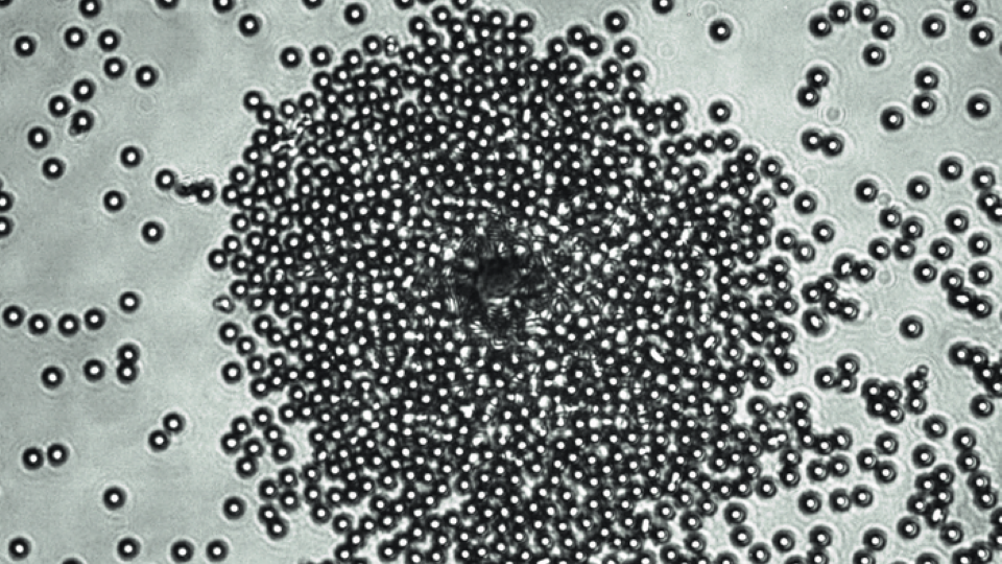Self-organising lasers adapt struct and cooperate
Self-organising lasers that mimic living systems could lead to new materials for sensing, computing, light sources and displays.

This is the claim of researchers at Imperial College London and University College London who have demonstrated the first spontaneously self-organising laser device that reconfigures when conditions change. Their findings are published in Nature Physics.
According to Imperial, the innovation will help enable the development of smart photonic materials capable of better mimicking properties of biological matter, such as responsiveness, adaptation, self-healing, and collective behaviour.
In a statement, co-lead author Professor Riccardo Sapienza, from the Department of Physics at Imperial, said: “Lasers, which power most of our technologies, are designed from crystalline materials to have precise and static properties. We asked ourselves if we could create a laser with the ability to blend structure and functionality, to reconfigure itself and cooperate like biological materials do.
“Our laser system can reconfigure and cooperate, thus enabling a first step towards emulating the ever-evolving relationship between structure and functionality typical of living materials.”
The self-assembling lasers in the team’s experiment consisted of microparticles dispersed in a liquid with high gain. Once enough of these microparticles collect together, they can harness external energy to lase.
Register now to continue reading
Thanks for visiting The Engineer. You’ve now reached your monthly limit of news stories. Register for free to unlock unlimited access to all of our news coverage, as well as premium content including opinion, in-depth features and special reports.
Benefits of registering
-
In-depth insights and coverage of key emerging trends
-
Unrestricted access to special reports throughout the year
-
Daily technology news delivered straight to your inbox










UK Enters ‘Golden Age of Nuclear’
The delay (nearly 8 years) in getting approval for the Rolls-Royce SMR is most worrying. Signifies a torpid and expensive system that is quite onerous...